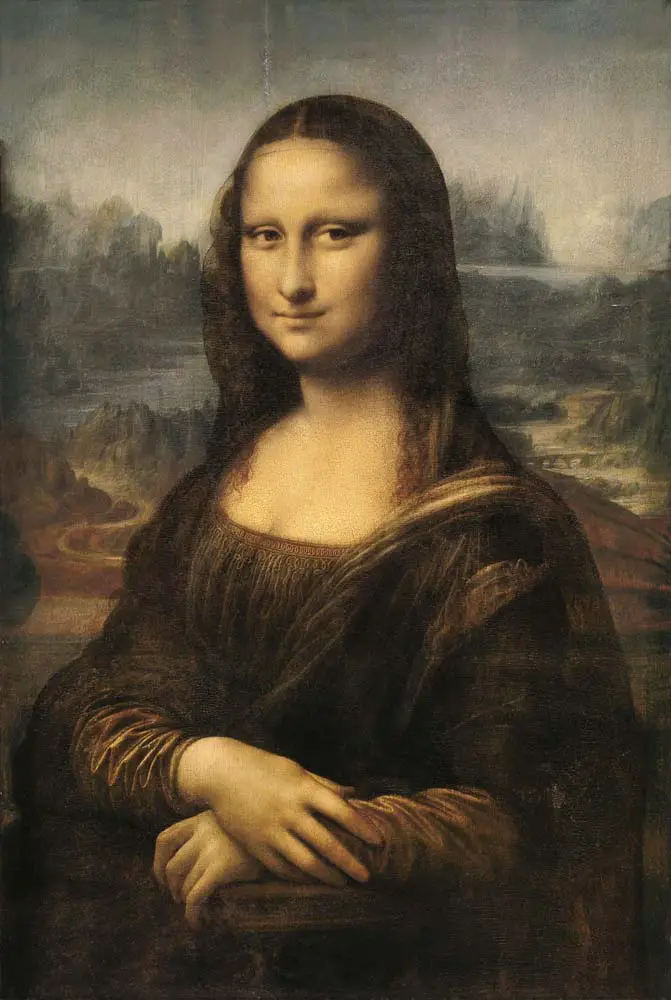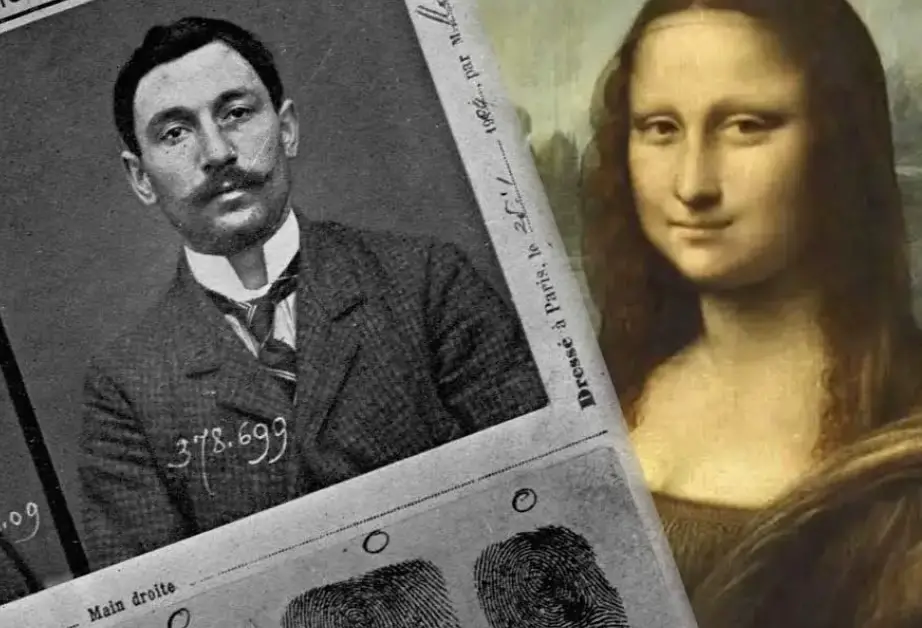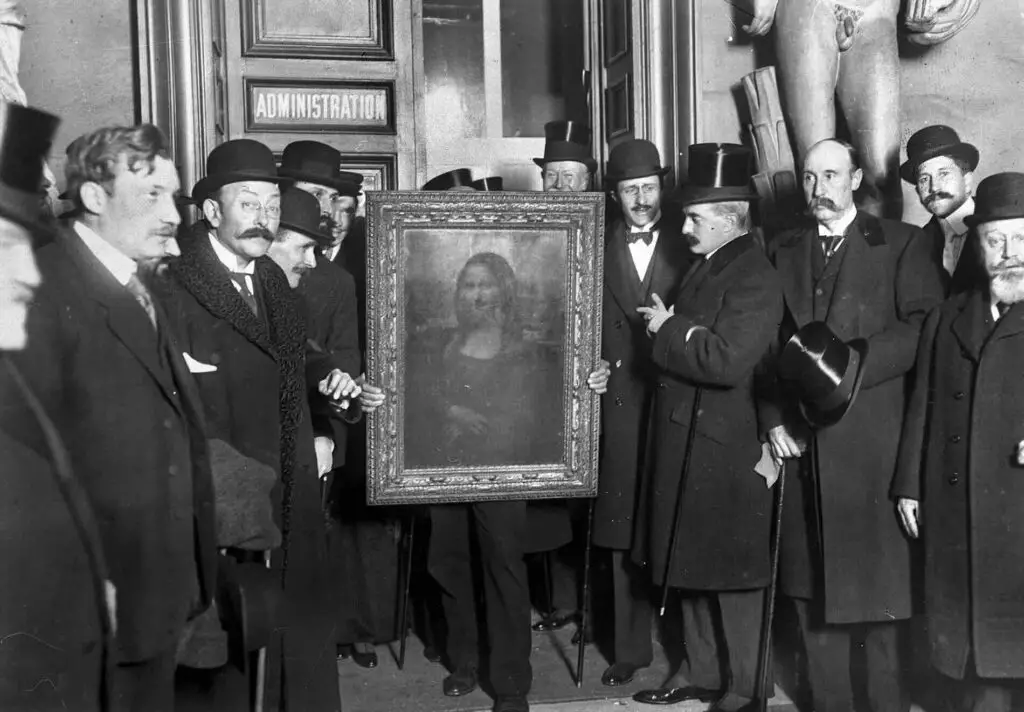One of the most captivating mysteries in art is the audacious theft of the Mona Lisa. Leonardo da Vinci’s seminal masterpiece is not just a celebrated piece of art; it’s a relic that echoes the profound innovation and artistry of the Italian Renaissance period.
The priceless painting, with its intriguing subtleties, historical antecedents, and the mysterious smile of its subject, holds an unmistakable spot in the annals of art history. This singularity made it an irresistible target for theft. This exceptional narrative examines the intricate details of its pilfering in 1911, the meticulous investigations and recovery efforts that ensued, and the radical transformations provoked in the domain of art security.
Table of Contents
Background of the Mona Lisa
Unraveling the Intrigue: The Magic of the Mona Lisa
Mysterious and enigmatic, the Mona Lisa, painted by the renowned Italian artist Leonardo da Vinci in the early 16th century, has held the world in a thrall for centuries. The charm of this portrait has captivated audiences far and wide, transcending time and geographical boundaries. But what exactly makes the Mona Lisa such a masterpiece?
One of the prime characteristics that set the Mona Lisa apart is its incredible detail and realism, which faithfully adheres to the philosophies of the High Renaissance. Her faint smile, the slightly furrowed brow, the soft rendering of her skin – Leonardo’s meticulous attention to detail in every facet of his subject brings an astonishing authenticity to the piece.

Leonardo’s innovative use of sfumato, a delicate blending of color and light, is also noteworthy. This technique lends realistic depth to the painting, going beyond two-dimensional portrayals. With sfumato, Leonardo achieved an atmospheric illusion, a new and advanced form of expression during the period it was painted.
Furthermore, the ambiguous nature of Mona Lisa’s facial expression contributes significantly to its mystique. The enigmatic smile that has inspired countless interpretations has added an element of intrigue unmatched by any other artwork. This ambiguity elicits a sense of interaction and captivates viewers like no other, creating different experiences for everyone.
The backdrop of the portrait also plays a pivotal role in its allure. While the foreground highlights human femininity, the background marks the advent of a fantastical, winding landscape. Mona Lisa, an embodiment of beauty, and the landscape, a symbol of wilderness and untamed imagination, present a brilliant contrast, making the painting a beacon of Leonardo’s prowess in symbolic storytelling.
The originality of Da Vinci’s work also carries immense importance. Before the Mona Lisa, portraits typically depicted subjects in profile. However, Leonardo, in his hallmark style, presented the Mona Lisa in a three-quarter view with an inviting but distant gaze, a revolutionary departure from traditional compositions.
Lastly, the history and lore surrounding the Mona Lisa add to the painting’s monumental reputation. From its creation to its theft in the early 1900s and subsequent recovery, the “La Gioconda” has been surrounded by anecdotes and conspiracy theories that enhance its legendary status.
Moreover, the technologically advanced examinations highlight Leonardo’s layers of alterations and corrections, revealing his tireless search for perfection.
The Mona Lisa, undeniably, is a product of its creator’s genius, a testament to Leonardo da Vinci’s insatiable curiosity and rigorous scientific observation. Its allure lies in its intricate details, mastery of techniques, and the powerful rendition of human emotion. It is not just a painting but a crucial watershed in the evolution of Western Art, still casting its profound spell on spectators and artists alike.

Details of the Theft
The Notorious Heist: The Unfolding of the ‘Mona Lisa’ Theft
In the heart of the art world, a tale of grand magnitude unravels involving an iconic art masterpiece – the Mona Lisa. Known for its revolutionary composition and mastery in execution, the Mona Lisa has been the talk of the town since the High Renaissance. This breathtaking creation is lauded as a testament to Leonardo da Vinci’s genius and has had an enduring impact on Western Art. However, one aspect of this picture that fuels curiosity and intrigue is the fabled theft of the masterpiece, a story that demands to be told.
It’s an unthinkable act, stealing an artwork revered across the globe. However, in 1911, this exact circumstance occurred. But what are the series of events that led to this unforgettable crime? Several factors stand out when examining the monumental theft.
- Firstly, the painting’s location in the Louvre, in the heart of Paris, played a significant role. The Mona Lisa’s prominent location within the museum made it an alluring target for potential thieves. However, this esteemed institution’s lack of sufficient security measures during the early 20th century set the stage for the eventual theft. Da Vinci’s masterpiece had alarmingly minimal protection, with few guards responsible for the safety of countless invaluable artworks, making it almost an open invitation to criminal minds.
- Secondly, understanding the mastermind behind the theft is crucial. Vincenzo Peruggia, an Italian handyman and painter, was the man who referred to this infamous crime. Peruggia, an employee at the Louvre, was familiar with the layout of the museum and the low-security measures in place. Stealing the Mona Lisa was bizarrely easy for him; he hid inside the museum overnight and took the painting the following morning.
Peruggia’s motive was steeped in misguided patriotism. He believed that France had wrongfully taken the Mona Lisa from Italy and that he was rescuing patriotic property. His erroneous belief ignored the reality that Leonardo brought the masterpiece to France.
The subsequent course of events is equally intriguing. Two years after the theft, the Mona Lisa was hidden in Peruggia’s tiny Parisian apartment. The art world was in a frenzy, from speculations about the likely culprits to the wild theories about the painting’s whereabouts. The Mona Lisa’s infamy grew exponentially, thus cementing its place in the global consciousness as one of the most coveted artworks.
Eventually, Peruggia attempted to sell the stolen masterpiece to Giovanni Poggi, an art gallery director in Florence. Upon recognizing the painting, Poggi feigned interest in stalling Peruggia, immediately alerting the authorities. Poggi’s quick thinking led to Peruggia’s arrest, and the masterpiece was returned to the Louvre.
In conclusion, a rather unfortunate combination of lax security, a disgruntled employee with misguided intentions, and an audacious act of criminality led to the infamous theft of the Mona Lisa. This heist led to reevaluating security principles in museums worldwide and indirectly contributed to the ‘Mona Lisa’ becoming one of the most universally recognized artworks in human history.

Impact on Art Security
The inconceivable theft of Da Vinci’s most famed work of art, the Mona Lisa, from the confines of the Louvre in 1911 didn’t just send shockwaves throughout the global community – it forever changed the world of art security. At the heart of the incident was an Italian handyman, Vincenzo Peruggia, whose motivations ranged from misplaced nationalism to monetary fervor.
Peruggia believed the iconic painting should be returned to its homeland, Italy. Using the insider knowledge he gained while working at the museum, Peruggia successfully executed the daring theft.
Even more astounding, he kept the stolen masterpiece hidden in a suitcase nestled under his bed in his Paris apartment for over two years, highlighting the glaring inadequacies in art security during that period.
Despite the furor and panicky hunt launched by French authorities, the Mona Lisa eluded capture until Peruggia boldly attempted to sell the priceless work of art to a Florentine Art dealer, Giovanni Poggi. His alarmingly bold move led to Peruggia’s capture and the joyous return of the Mona Lisa to its rightful place in the Louvre.
The fallout from the theft had significant ramifications, propelling the world of art security into the modern era. Before the theft, the Louvre’s security measures were surprisingly lax, with the Mona Lisa protected and unattended.
After its return, the painting ushered in a new age of advanced art protection technology. Museums worldwide began implementing stricter security measures, using the theft as a sobering warning.
Beyond the realm of art security, the theft contributed to the cultural phenomenon of the Mona Lisa. Already a significant work of art, the theft, and its mysterious circumstances skyrocketed the Mona Lisa’s fame. The painting’s absence from the museum walls only perpetuated its allure, solidifying its place in art history as more than a revolutionary painting; it became a symbol of intrigue and enduring artistic value.
Today, the Mona Lisa enjoys unparalleled fame and security, standing encapsulated behind bulletproof glass and amidst a climate-controlled environment, ever under the watchful eye of sophisticated security systems. This unprecedented level of protection only accentuates the painting’s significance and the profound influence the 1911 theft had on global art security.
Indelibly, this notorious incident underscores an enduring truth: art is an irreplaceable expression of cultural and historical significance that must be safeguarded with the utmost vigilance.
The theft of the Mona Lisa propelled this realization into the public conscience, making it a pivotal moment in art history whose influence continues to reverberate in the realm of art security today.

Indeed, every twist and turn of the Mona Lisa’s theft spotlighted humanity’s enthusiasm for art and revealed an underbelly of art heists in early 20th-century Europe.
The theft of Da Vinci’s masterpiece cast ripples worldwide and began a slow yet extensive transformation regarding safeguarding invaluable art pieces.
As we step back from the grand landscape of this narrative, we can appreciate how this single art theft has substantially constituted the foundation of art protection worldwide.
Today, we owe the advanced protocols, strategic technology deployment, and a fortified approach to art safeguarding to Mona Lisa’s absence and triumphant return.
Anita Louise Art is dedicated to art education, great artists, and inspiring others to find and create their art. We love art that uplifts and inspires. #ArtToMakeYouSmile! #ArtToMakeYouHappy!
If you are interested to see any of my art, you can find out more by clicking here. If you are interested in what inspires me and my paintings, you can discover more by clicking here.
We have a free newsletter and would love you to be part of our community; you can subscribe to the newsletter by clicking here. I would be happy to talk to you if you have any questions. You can reach me, Anita, by clicking here.
Subscribe to our Anita Louise Art YouTube Channel filled with great videos and information by clicking here.
Join us for our podcast “5 Minutes With Art.” Spend 5 minutes a week with us to discover and learn about great art and artists. You can find out more about our podcast by clicking here.
Related Questions
Mona Lisa – The Most Beautiful Smile In The World Revealed
Long celebrated as one of the most exquisite paintings in the world, Leonardo da Vinci’s Mona Lisa isn’t just admired for its artistic brilliance. One of the most beguiling elements of this iconic portrait is its enigmatic smile—a smile that has spawned countless discussions, studies, and even parodies. Read on as we delve into why the smile in da Vinci’s Mona Lisa is regarded as one of the most beautiful and mysterious in the world.
By clicking here, you can learn more by reading Mona Lisa – The Most Beautiful Smile In The World Revealed.
Who Is Mona Lisa? Unveiling The Enigmatic Portrait
Many believe that the Mona Lisa is the portrait of Madam Lisa Giocondo. While the woman’s true identity in the painting has remained a subject of debate and speculation, it is widely believed that Mona Lisa is a portrait of Madam Lisa Giocondo. This theory is based on the mid-sixteenth-century biography of Leonardo da Vinci by Giorgio Vasari, historical records, and circumstantial evidence.
By clicking here, you can learn more by reading Who Is Mona Lisa? Unveiling The Enigmatic Portrait.
Mona Lisa Vandalized, Why Do People Vandalize Famous Art?
There was one well-known instance in 1956 where it was damaged when someone threw acid at the lower part of the painting and another where a rock was thrown at it. In 2019, it was hit with a teacup, and in 2022, cake was thrown on it. However, it primarily remained unscathed thanks to extensive security measures. Read on as we go through some of the 15 reasons art like the Mona Lisa is Vandalized.
By clicking here, you can learn more by reading Mona Lisa Vandalized, Why Do People Vandalize Famous Art?


